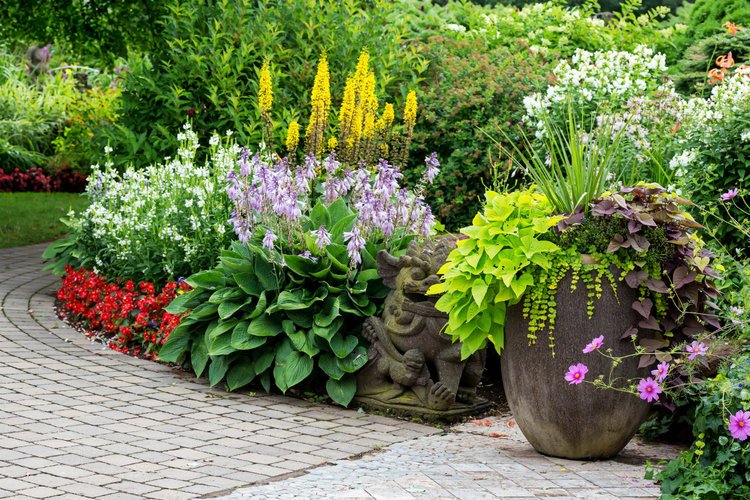4 Design Elements for your Spring Landscaping Projects
With residents of Poughquag, NY and surrounding areas looking forward to spring weather, we decided to put together some landscape essentials to kickstart the season. Here we couple design elements such as line, shape and color with practical projects to offer inspiration for your new backyard projects.
Fluid shapes for flowerbeds
Giving your shrubs, flowers and trees fluidly shaped beds can go a long way in creating a relaxed, springtime atmosphere. Why not have your planter beds extended to allow additional room for flowering spring perennials? Thicker beds allow for a denser arrangement and a greater variety of layered plantings. The organic shapes can be edged with natural stone, or even raised using retaining walls. Either option will enhance their flowing elegance and contribute both shape and form to your spring landscape. Using loose shapes in your landscape design fulfills a number of functions, including creating visual interest and contributing to a rustic or naturalistic form theme.
Plant bright colors
Springtime is synonymous with the rich fragrance and dazzling color of flowering perennials. To really take advantage of this time of year, have your planters filled with flowers of a variety of colors. Colors instantly brighten up a landscape and create points of interest to highlight certain areas of the yard. They can also be used to enhance, complement or match the colors present in your architecture or hardscaping. Of course, you can have too much of a good thing. A good color scheme for springtime flowers and plantings includes a balance of warm and cool colors, yellow and purple, for example. It’s also a good idea to not have more than three main colors that repeat throughout the design for the sake of maintaining unity.
Related: 5 Plants for Introducing Greenery to your Landscaping
Patios with sweeping curves
Sweeping curves inject visual movement into a design and make for a bold statement that remains natural and welcoming. The curve leads the eye and encourages it to further explore the setting. A curved edge to a patio can be used to soften the visual hardness of a paved area, or balance out architecture containing an abundance of sharp or square angles. The soothing effect of curves in a patio design can transform it into a relaxing, informal outdoor space in which to enjoy the fresh air and sunshine after a cold winter.
Walkways with meandering lines
Meandering lines, particularly those integrated into the layout of walkways, create a sense of mystery, keeping pedestrians wondering what might lie behind the next bend. Meandering walkways can be used to take backyard pedestrians on a tour of the various features of the landscape. This can be a great way of showing off your spring plantings, water features and the thrumming life of your yard. However, if you’re thinking of using meandering walkways leading up to your front door or connecting more functional areas like outdoor kitchens and dining halls, you might want to keep the twists and turns to a minimum to make these areas more accessible and prevent guests from taking shortcuts through your flowerbeds. Meandering walkways can also be used to section off areas of differing purposes and connect outdoor spaces in an interesting way. The natural, river-like arrangement ensures that flow is maintained throughout the design and that the overall effect remains loose and informal.

